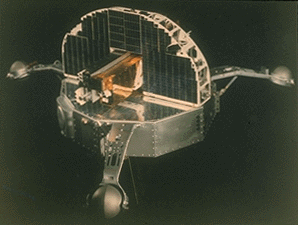OSO-6

 Mission Overview
Mission Overview
OSO-6 operated from August 1969 until January 1972. The orbital period was ~ 95 minutes, with the orbital day lasting ~ 60 minutes of each orbit. The spin rate was 0.5 rps.
 Instrumentation
Instrumentation
The hard X-ray detector (27-189 keV) was a 5.1 sq-cm NaI(Tl) scintillator, collimated to 17 deg x 23 deg FWHM. The system had 4 energy channels (separated 27-49-75-118-189 keV). The detector spun with the spacecraft on a plane containing the Sun direction within +/- 3.5 degrees. Data were read with alternate 70 ms and 30 ms integrations for 5 intervals every 320 ms.
Also on board was a NRL experiment meant primarily to monitor solar flares. This X-ray detector operated from August 1969 until January 1972. The NaI(Tl) scintillator had a frontal area of 1.3 sq-cm and was 2.54 cm thick. The detector operated during daylight periods only (~ 70% of each 99.8 minute orbit). It had 6 energy channels covering 23-82 keV, and an integral channel for >82 keV (out to about 500 keV). Spectra were accumulated for 2.56 s.
